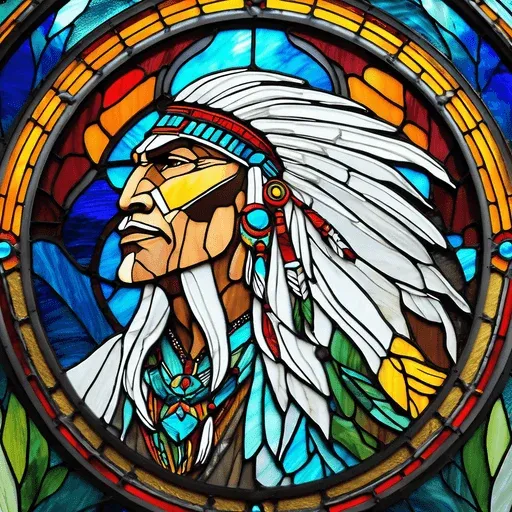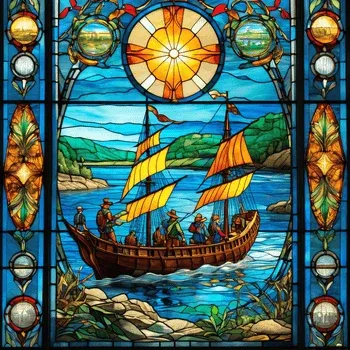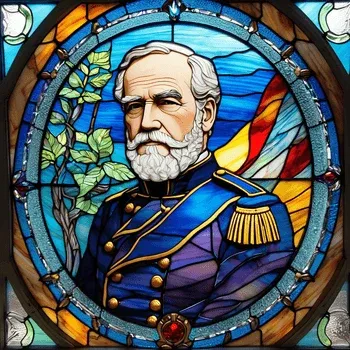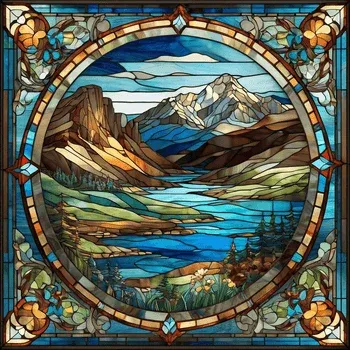The story of the American Indian is one of the darkest blots on the page of the history of civilization. Of the three principal peoples of Europe who settled the New World,—the Spanish, the British, and the French.
The Spanish made slaves of them and dealt with them with shocking cruelty,
And the British were, in a different way, as unjust, and at times little less cruel.
As for the French, while they showed more sympathy with the natives, and treated them in a more friendly and considerate spirit, their dealings with them were by no means free from the charge of injustice and cruelty. This we shall seek to show in the following story.
When we talk of the Indians of the United States we are very apt to get wrong ideas about them. The word Indian means to us a member of the savage hunting tribes of the North; a fierce, treacherous, implacable foe, though he could be loyal and generous as a friend; a being who made war a trade and cruelty a pastime, and was incapable of civilization. But this is only one type of the native inhabitants of the land. Those of the South were very different. Instead of being rude savages, like their Northern brethren, they had made some approach to civilization; instead of being roving hunters, they were settled agriculturists; instead of being morose and taciturn, they were genial and light-hearted; and instead of possessing only crude forms of government and religion, they were equal in both these respects to some peoples who are classed as civilized.
If any feel a doubt of this, let them read what La Salle and the intelligent priest who went with him had to say about the Indians of the lower Mississippi, their government, agriculture, and friendliness of disposition, and their genial and sociable manner. It is one of the tribes of Southern Indians with which we are here concerned, the Natchez tribe or nation, with whom La Salle had such pleasing relations.
It may be of interest to our readers to be told something more about the customs of the Southern Indians, since they differed very greatly from those of the North, and are little known to most readers. Let us take the Creeks, for instance,—a powerful association made up of many tribes of the Gulf region. They had their chiefs and their governing council, like the Northern Indians, but the Mico, who took the place of the Sachem of the North, had almost absolute power, and the office was hereditary in his family. Agriculture was their principal industry, the fields being carefully cultivated, though they were active hunters also. The land was the property of the tribe, not of individuals, and each family who cultivated it had to deposit a part of their products in the public store-house. This was under the full control of the Mico, though food was distributed to all in times of need.
Their religion was much more advanced than that of the Northern tribes. They had the medicine man and the notions about spirits of the North, but they also worshipped the sun as the great deity of the universe, and had their temples, and priests, and religious ceremonies. One of their great objects of care was the sacred fire, which was carefully extinguished at the close of the year, and rekindled with "new fire" for the coming year. While it was out serious calamities were feared and the people were in a state of terror. There was nothing like this in the North.
The most remarkable of the United States Indians were the Natchez, of whom we have above spoken. Not only La Salle, but later French writers have told us about them. They had a different language and were different in other ways from the neighboring Indians. They worshipped the sun as their great deity, and had a complete system of temples, priests, idols, religious festivals, sacred objects and the like, the people being deeply superstitious. Their temples were built on great mounds, and in them the sacred fire was very carefully guarded by the priests. If it should go out fearful misfortunes were expected to ensue.
Their ruler was high priest as well as monarch. He was called the Sun and was believed to be a direct descendant of the great deity. He was a complete autocrat, with the power of life and death over the people, and his nearest female relative, who was known as the woman chief, had the same power.
On his death there were many human sacrifices, though it was not his son, but that of the woman chief, who succeeded to the throne. Not only the ruler, but all the members of the royal caste, were called Suns, and had special privileges. Under them there was a nobility, also with its powers and privileges, but the common people had very few rights.
On the temple of the sun were the figures of three eagles, with their heads turned to the east. It may be seen that this people was a very interesting one, far advanced in culture beyond the rude tribes of the North, and it is a great pity that they were utterly destroyed and their institutions swept away before they were studied by the scientists of the land. Their destruction was due to French injustice, and this is how it came about.
Louisiana was not settled by the French until about twenty years after La Salle's great journey, and New Orleans was not founded till 1718. The French gradually spread their authority over the country, bringing the Mississippi tribes under their influence. Among these were the Natchez, situated up the river in a locality indicated by the present city of Natchez. The trouble with them came about in 1729, through the unjust behavior of a French officer named Chopart. He had been once removed for injustice, but a new governor, M -Perier, had replaced him, not knowing his character.
Chopart, on his return to the Natchez country, was full of great views, in which the rights of the old owners of the land did not count. He was going to make his province a grand and important one, and in the presence of his ambition the old inhabitants must bend the knee. He wanted a large space for his projected settlement, and on looking about could find no spot that suited him but that which was occupied by the Indian village of the White Apple. That the natives might object to this appropriation of their land did not seem to trouble his lordly soul.
He sent to the Sun of the village, bidding him to come to the fort, which was about six miles away. When the chief arrived there, Chopart told him, bluntly enough, that he had decided to build a settlement on the site of the White Apple village, and that he must clear away the huts and build somewhere else. His only excuse was that it was necessary for the French to settle on the banks of the rivulet on whose waters stood the Grand Tillage and the abode of the Grand Sun.
The Sun of the Apple was taken aback by this arbitrary demand. He replied with dignity that his ancestors had dwelt in that village for as many years as there were hairs in his head, and that it was good that he and his people should continue there. This reasonable answer threw Chopart into a passion, and he violently told the Sun that he must quit his village in a few days or he should repent it.
"When your people came to ask us for lands to settle on," said the Indian in reply, "you told us that there was plenty of unoccupied land which you would be willing to take. The same sun, you said, would shine on us all and we would all walk in the same path."
Before he could proceed, Chopart violently interrupted him, saying that he wanted to hear no more, he only wanted to be obeyed. At this the insulted chief withdrew, saying, with the same quiet dignity as before, that he would call together the old men of the village and hold a council on the affair.
The Indians, finding the French official so violent and arbitrary, at first sought to obtain delay, saying that the corn was just above the ground and the chickens were laying their eggs. The commandant replied that this did not matter to him, they must obey his order or they should suffer for their obstinacy. They next tried the effect of a bribe, offering to pay him a basket of corn and a fowl for each hut in the village if he would wait till the harvest was gathered. Chopart proved to be as avaricious as he was arbitrary, and agreed to accept this offer.
He did not know the people he was dealing with. Stung with the injustice of the demand, and deeply incensed by the insolence of the commandant, the village council secretly resolved that they would not be slaves to these base intruders, but would cut them off to a man. The oldest chief suggested the following plan. On the day fixed they should go to the fort with some corn, and carrying their arms as if going out to hunt. There should be two or three Natchez for every Frenchman, and they should borrow arms and ammunition for a hunting match to be made on account of a grand feast, promising to bring back meat in payment. The arms once obtained, the discharge of a gun would be the signal for them to fall on the unsuspecting French and kill them all.
He further suggested that all the other villages should be apprised of the project and asked to assist. A bundle of rods was to be sent to each village, the rods indicating the number of days preceding that fixed for the assault. That no mistake might be made, a prudent person in each village should be appointed to draw out a rod on each day and throw it away. This was their way of counting time.
The scheme was accepted by the council, the Sun warmly approving of it. When it was made known to the chiefs of the nation, they all joined in approval, including the Grand Sun, their chief ruler, and his uncle, the Stung Serpent. It was kept secret, however, from the people at large, and from all the women of the noble and royal castes, not excepting the woman chief.
This it was not easy to do. Secret meetings were being held, and the object of these the female Suns had a right to demand. The woman chief at that time was a young princess, scarce eighteen, and little inclined to trouble herself with political affairs; but the Strong Arm, the mother of the Grand Sun, was an able and experienced woman, and one friendly to the French. Her son, strongly importuned by her, told her of the scheme, and also of the purpose of the bundle of rods that lay in the temple.
Strong Arm was politic enough to appear to approve the project, but secretly she was anxious to save the French. The time was growing short, and she sought to have the commandant warned by hints of danger. These were brought him by soldiers, but in his supercilious self-conceit he paid no heed to them, but went on blindly towards destruction. He went so far as to put in irons seven of those who warned him of the peril, accusing them of cowardice. Finding this effort unavailing, the Strong Arm secretly pulled some rods out of the fatal bundle, hoping in this way to disarrange the project of the conspirators.
Heedless of all that had been told him, Chopart and some other Frenchmen went on the night before the fatal day to the great village of the Natchez, on a party of pleasure, not returning till break of day, and then the worse for his potations. In the mean time the secret had grown more open, and on his entering the fort he was strongly advised to be on his guard.
The drink he had taken made a complete fool of him, however, and he at once sent to the village from which he had just returned, bidding his interpreter to ask the Grand Sun whether he intended to come with his warriors and kill the French. The Grand Sun, as might have been expected, sent word back that he did not dream of such a thing, and he would be very sorry, indeed, to do any harm to his good friends, the French. This answer fully satisfied the commandant, and he went to his house, near the fort, disdaining the advice of the informers.
It was on the eve of St. Andrew's Day, in 1729, that a party of the Natchez approached the French settlement. It was some days in advance of that fixed, on account of the meddling with the rods. They brought with them one of the common people, armed with a wooden hatchet, to kill the commandant, the warriors having too much contempt for him to be willing to lay hands on him. The natives strayed in friendly fashion into the houses, and many made their way through the open gates into the fort, where they found the soldiers unsuspicious of danger and without an officer, or even a sergeant, at their head.
Soon the Grand Sun appeared, with a number of warriors laden with corn, as if to pay the first installment of the contribution. Their entrance was quickly followed by several shots. This being the signal agreed upon, in an instant the natives made a murderous assault on the unarmed French, cutting them down in their houses and shooting them on every side. The commandant, for the first time aware of his blind folly, ran in terror into the garden of his house, but he was sharply pursued and cut down. The massacre was so well devised and went on so simultaneously in all directions that very few of the seven hundred Frenchmen in the settlement escaped, a handful of the fugitives alone bringing the news of the bloody affair to New Orleans. The Natchez completed their vengeance by setting on fire and burning all the buildings, so that of the late flourishing settlement only a few ruined walls remained.
As may be seen, this massacre was due to the injustice, and to the subsequent incompetence, of one man, Chopart, the commandant. It led to lamentable consequences, in the utter destruction of the Natchez nation and the loss of one of the most interesting native communities in America.
No sooner, in fact, had the news of the massacre reached New Orleans than active steps were taken for revenge. A force, largely made up of Choctaw allies, assailed the fort of the Natchez. The latter asked for peace, promising to release the French women and children they held as prisoners. This was agreed to, and the Indians took advantage of it to vacate the fort by stealth, under cover of night, taking with them all their baggage and plunder. They took refuge in a secret place to the west of the Mississippi, which the French had much difficulty to discover.
The place found, a strong force was sent against the Indians, its route being up the Red River, then up the Black River, and finally up Silver Creek, which flows from a small lake, near which the Natchez had built a fort for defence against the French. This place they maintained with some resolution, but when the French batteries were placed and bombs began to fall in the fort, dealing death to women and children as well as men, the warriors, horrified at these frightful instruments of death, made signals of their readiness to capitulate.
Night fell before terms were decided upon, and the Indians asked that the settlement should be left till the next day. Their purpose was to attempt to escape, as they had done before during the night, but they were too closely watched to make this effective. Some of them succeeded in getting away, but the great body were driven back into the fort, and the next day were obliged to surrender at discretion. Among them were the Grand Sun and the women Suns, with many warriors, women, and children.
The end of the story of the Natchez is the only instance on record of the deliberate annihilation of an Indian tribe. Some have perished through the event of war, no other through fixed intention. All the captives were carried to New Orleans, where they were used as slaves, not excepting the Strong Arm, who had made such efforts to save the French. These slaves were afterward sent to St. Domingo to prevent their escape, and in order that the Natchez nation might be utterly rooted out.
Those of the warriors who had escaped from the fort, and others who were out hunting, were still at large, but there were few women among them, and the nation was lost past renewal. These fugitives made their way to the villages of the Chickasaws, and were finally absorbed in that nation, "and thus," says Du Pratz, the historian of this affair, "that nation, the most conspicuous in the colony, and most useful to the French, was destroyed."
Du Pratz was a resident of New Orleans at the time, and got his information from the parties directly concerned. He tells us that among the women slaves "was the female Sun called the Strong Arm, who then told me all she had done in order to save the French." It appears that all she had done was not enough to save herself.
